Are you tired of constantly buying disposable bedding for your hedgehog’s cage? Look no further! We’ve got the perfect solution for you: DIY hedgehog cage liners.
Not only are they an eco-friendly alternative, but they also provide a comfortable and hygienic environment for your prickly friend.
In this article, we’ll guide you through the benefits of making your own cage liners, help you choose the right materials, and provide step-by-step instructions to create them.
Join us on this journey towards a greener and happier hedgehog habitat!
Key Takeaways
- DIY hedgehog cage liners are a cost-effective alternative to pre-made bedding that saves money in the long run.
- Choosing durable and absorbent materials like fleece fabric or bamboo-based fabrics is important for hedgehog cage liners.
- Regular cleaning and maintenance of DIY hedgehog cage liners is necessary for hygiene and odor control.
- Using eco-friendly materials and disposing of cage liners responsibly can help minimize environmental impact.
The Benefits of DIY Hedgehog Cage Liners
You’ll love the benefits of using DIY hedgehog cage liners for your pet’s habitat. Not only will you be saving money, but you’ll also be reducing waste.
By making your own cage liners, you can eliminate the need to constantly purchase disposable bedding materials. This not only saves you money in the long run but also reduces the amount of waste that ends up in landfills.
One of the biggest advantages of DIY hedgehog cage liners is their cost-effectiveness. Instead of spending money on pre-made bedding or liners, you can use materials that are readily available at home or easily affordable at any store. Old towels, fleece blankets, or even old t-shirts can serve as excellent options for creating comfortable and reusable cage liners.
In addition to saving money, using DIY hedgehog cage liners helps reduce waste. Disposable bedding often ends up in landfills after just one use, contributing to environmental pollution. By opting for reusable liner materials like fleece or cloth, you are actively reducing the amount of waste produced by your pet’s habitat.
Choosing the Right Materials for Your Hedgehog Cage Liners
When selecting materials for your hedgehog’s cage liner, it’s important to consider their durability and absorbency. Choosing sustainable options not only benefits the environment but also ensures a healthier living space for your beloved pet.
One cost-effective alternative is using old towels or blankets as liners. These materials are often readily available in most households and can be easily washed and reused. They offer good absorbency and can withstand daily wear and tear.
Another sustainable option is using fleece fabric. Fleece is soft, comfortable, and highly absorbent, making it an ideal choice for cage liners. It also dries quickly, preventing the growth of bacteria and odor buildup. To make it cost-effective, you can repurpose old fleece blankets or purchase remnant pieces from fabric stores.
For those looking for a more eco-friendly option, there are bamboo-based fabrics available in the market that are both durable and highly absorbent. Bamboo is a renewable resource that grows quickly without the need for harmful pesticides or excessive water usage.
Remember to choose materials that are safe for hedgehogs, avoiding any toxic substances or loose fibers that may pose a risk to their health. By considering sustainability and cost-effectiveness when choosing materials for your hedgehog’s cage liner, you’re making a positive impact on the environment while providing a cozy habitat for your furry friend.
Step-by-Step Guide to Making Your Own Hedgehog Cage Liners
To start making your own cage liners for your hedgehog, gather the necessary materials and measure the dimensions of your pet’s enclosure. Making your own cage liners is a cost-effective solution and an eco-friendly alternative to disposable bedding options.
When it comes to creating a comfortable and safe environment for your hedgehog, choosing the right bedding is crucial. There are several options you can consider for hedgehog cage setup. One popular choice is fleece fabric, which provides warmth and softness while being easy to clean. Look for anti-pill or polar fleece that will withstand repeated washing without losing its quality. Another option is flannel fabric, which offers a cozy surface for your hedgehog to snuggle on. Remember to wash the fabric before using it to remove any chemicals or residues.
Once you have gathered the materials, measure the length and width of your hedgehog’s enclosure. This will help you determine the size of the liner needed. Cut the fabric according to these measurements, leaving some extra space around the edges for folding and securing.
Place the liner in your hedgehog’s cage and secure it with clips or Velcro strips along the edges if necessary. Hedgehogs are known to burrow, so make sure there are no loose threads or excess fabric that could pose a safety hazard.
Regularly inspect and clean the cage liners to maintain hygiene and prevent odors or bacteria buildup. Having multiple liners on rotation allows you to easily switch them out when cleaning one.
Maintaining and Cleaning Your DIY Hedgehog Cage Liners
To maintain and clean your homemade cage liners for your pet hedgehog, regularly inspect them for any signs of dirt or odor. This will ensure that your hedgehog’s living space remains fresh and hygienic. Here are some tips to help you keep your DIY cage liners in top condition:
Preventing Odor
Remove any solid waste daily to prevent unpleasant smells from accumulating.
Wash the liners at least once a week to eliminate bacteria and odors.
Allow the liners to dry completely before placing them back in the cage.
Recommended Cleaning Products
Use a mild detergent or pet-safe disinfectant to wash the liners.
Avoid using bleach or harsh chemicals, as they can be harmful to your hedgehog.
Consider using vinegar or baking soda as natural odor-neutralizing agents.
Proper Washing Technique
Start by shaking off any loose debris from the liner.
Soak it in warm water with a small amount of detergent/disinfectant for about half an hour.
Gently scrub any stained areas with a soft brush, then rinse thoroughly.
Eco-Friendly Tips for Using and Disposing of Hedgehog Cage Liners
One option for using and disposing of your hedgehog cage liners in an environmentally conscious way is to explore eco-friendly alternatives. When it comes to hedgehog bedding, there are several options that can help reduce waste and minimize the environmental impact.
One popular choice is using fleece liners instead of disposable bedding. Fleece liners are reusable, easy to clean, and provide a comfortable surface for your hedgehog to walk on. To create a fleece liner, simply measure the dimensions of your cage and cut a piece of fleece fabric accordingly. Place the liner inside the cage, securing it in place with clips or Velcro strips if necessary. The great thing about fleece liners is that they can be easily washed and reused multiple times before needing replacement.
Another eco-friendly alternative is using shredded newspaper or recycled paper bedding as substrate for your hedgehog’s cage. These materials are biodegradable and can be composted after use, reducing waste even further.
Frequently Asked Questions
How Long Does a DIY Hedgehog Cage Liner Typically Last Before Needing to Be Replaced?
DIY hedgehog cage liners typically last a few months before needing to be replaced. They’re made from materials like fleece or flannel, which are soft and absorbent. Regular washing helps maintain their durability and eco-friendly qualities.
Can I Use Any Type of Fabric for Making My Own Hedgehog Cage Liner, or Are There Specific Materials That Are Recommended?
Can any fabric work for DIY hedgehog cage liners, or are specific materials recommended? We explore alternative options and the benefits of eco-friendly materials. Join us in creating a cozy habitat for our prickly pals!
Are There Any Special Considerations I Should Keep in Mind When Washing and Drying My DIY Hedgehog Cage Liners?
When washing and drying DIY hedgehog cage liners, there are special considerations to keep in mind. It’s important to follow best practices, such as using gentle detergents and avoiding fabric softeners. Tips like air-drying can help prevent potential risks and ensure longevity.
Are There Any Potential Health Risks Associated With Using DIY Hedgehog Cage Liners, Such as Allergies or Skin Irritations?
When using DIY hedgehog cage liners, potential health risks like allergies or skin irritations can occur. To prevent this, we recommend safety precautions such as using hypoallergenic materials and regularly washing the liners.
Are There Any Specific Eco-Friendly Disposal Methods for Hedgehog Cage Liners That I Should Be Aware Of?
There are several eco-friendly disposal methods for hedgehog cage liners, which can be alternatives to traditional disposal methods. These methods prioritize sustainability and include composting, recycling, or repurposing the liners for other purposes.
Conclusion
In conclusion, making your own DIY hedgehog cage liners is not only a cost-effective option but also an eco-friendly one. By carefully selecting the right materials and following our step-by-step guide, you can provide a comfortable and hygienic living space for your hedgehog.
Additionally, maintaining and cleaning these liners is a breeze, ensuring that your pet stays happy and healthy. Remember to implement our eco-friendly tips for using and disposing of the liners responsibly.
With these homemade cage liners, you can create a sustainable environment for your beloved hedgehog while reducing waste in the process.

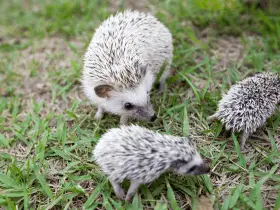


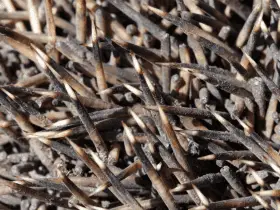





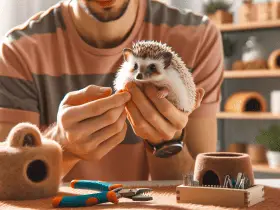




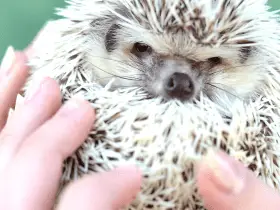
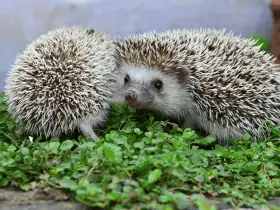
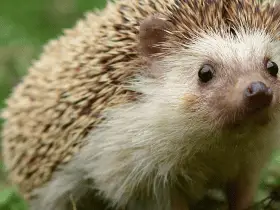
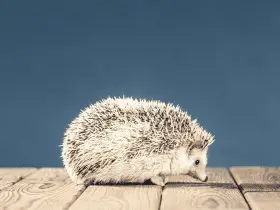
Leave a Reply
View Comments